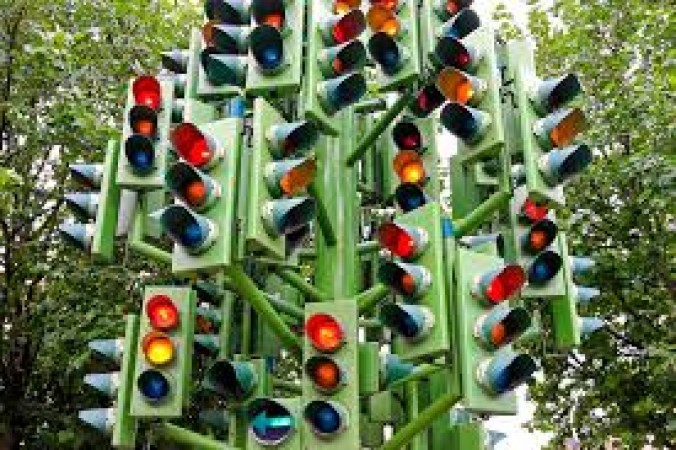
In the annals of transportation history, the invention of the traffic light stands as a pivotal moment. Its creation marked a significant milestone in managing the flow of vehicles and pedestrians on roads and at intersections. Developed in the late 19th century, the traffic light has undergone numerous advancements since its inception, evolving in both design and functionality.
Origins of the Traffic Light
The credit for the invention of the first traffic light is often attributed to J.P. Knight, a British railway engineer. In 1868, Knight introduced a signaling device in London consisting of semaphore arms that controlled the flow of horse-drawn traffic. However, it wasn't until 1912 that the modern electric traffic light, as we know it today, made its debut.
Evolution of Traffic Signals
The early versions of traffic lights were rudimentary compared to their contemporary counterparts. They typically featured red and green lights, operated manually by a police officer or a designated operator. Over time, advancements in technology led to the introduction of automated signals and the inclusion of amber (yellow) lights to warn of impending changes.
Integration of Driverless Cars
With the advent of autonomous or driverless vehicles, the question arises: Can these sophisticated machines effectively recognize and respond to traditional traffic signals?
Challenges and Solutions
Driverless cars rely on a combination of sensors, cameras, and artificial intelligence algorithms to navigate roads and interact with their surroundings. While they excel in detecting obstacles, pedestrians, and other vehicles, recognizing and interpreting traffic signals present unique challenges.
Technological Solutions
To address these challenges, engineers and developers are working on innovative solutions to ensure seamless integration between driverless cars and existing traffic infrastructure. These solutions include:
Advanced Sensor Technology: Incorporating state-of-the-art sensors capable of detecting and interpreting traffic signals with high accuracy.
Machine Learning Algorithms: Utilizing machine learning algorithms to teach autonomous vehicles to recognize and respond to various traffic signals under different conditions.
Vehicle-to-Infrastructure Communication (V2I): Establishing communication protocols between driverless cars and traffic signal systems to receive real-time signal information.
Standardization Efforts: Collaborating with regulatory bodies and transportation authorities to establish standards for traffic signal design and communication protocols.
Future Prospects
As technology continues to advance, the prospect of driverless cars seamlessly integrating with existing traffic infrastructure becomes increasingly plausible. However, widespread adoption and implementation may require significant investment in infrastructure upgrades and regulatory frameworks to ensure compatibility and safety.
The invention of the traffic light revolutionized transportation management, providing a systematic approach to regulating traffic flow. While the integration of driverless cars presents new challenges, ongoing technological advancements offer promising solutions for ensuring compatibility with existing traffic signals.
MG Hector BlackStorm Review, this new edition has many amazing features
Is Your Smartphone Ruining Your Relationship? Know The Surprising Truth
Xiaomi's Redmi Pad Pro Receives BIS Certification, India Launch Soon: What to Expect More